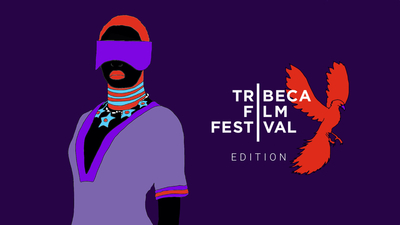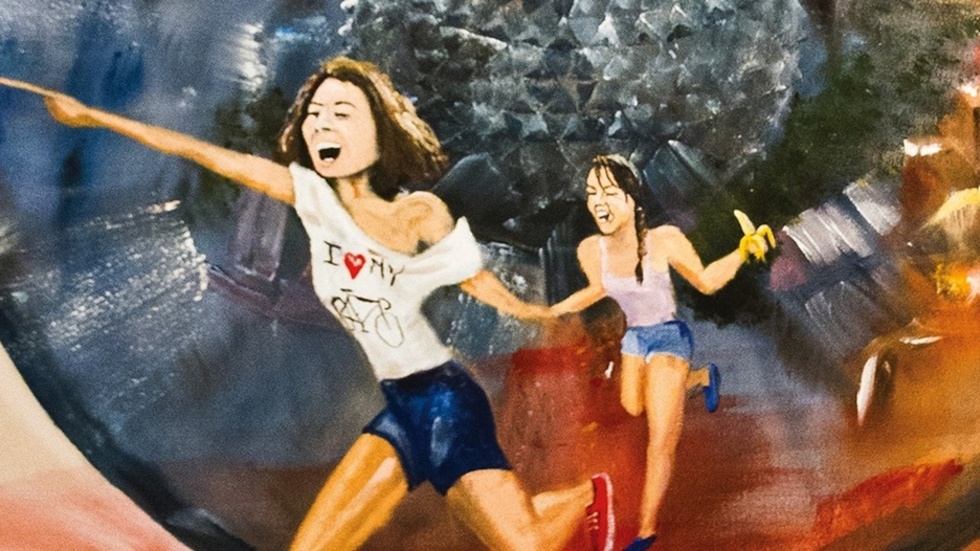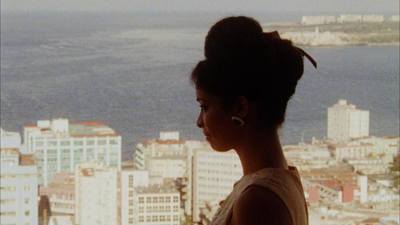
BY ZACHARY WIGON |
Interview: Randy Moore's 'Escape From Tomorrow' Is A Living Example Of Tech-Aided Cinema
We constantly talk about how improving technology is helping cinema become more efficient, but few examples are as stellar as Randy Moore's Escape From Tomorrow. We talked to the director about how a new camera gave him the idea for his guerrilla-style thriller.

The benefits of the Canon 5D are well-known and well-documented in indie film circles by now - a cheap, easy-to-use camera that is portable and looks great in a variety of lighting conditions. Yet while this obvious point has been well hammered home, we've yet to see too much about a different aspect of this DSLR addressed: its discreet nature.
Happily, that's all about to change, in the form of Randy Moore's guerrilla-cinema bomb, Escape From Tomorrow. Shot surreptitiously at Disneyland (that is to say, without Disney's permission) using a 5D, the film would have been impossible to make even ten years ago - but due to the fact that the 5D looks like a still camera, Moore's subterfuge was possible.
In the end, his risky gambit has paid off: Escape From Tomorrow premiered at Sundance 2013 and is about to be released by PDA, the distribution arm of Cinetic Media. A fairy tale gone terribly, terribly wrong, the film utilizes a Lynchian register of visual nightmare to depict the dark side of Disneyworld's potent iconography. The black, black comedy follows a family of four on vacation, specifically focusing on the father (Roy Abramsohn), who is fired - while on vacation! - in the film's opening scene; as he keeps this unfortunate news from his family so that they can enjoy their last day at the theme park, his vacation only gets more and more deranged, starting with his lurid obsession with two teenage French girls and getting increasingly more bizarre from there. In the end, witches, mad scientists, and "cat flu" all play a role. I had the chance to speak with Moore by phone about his transgressive debut feature.
"I'm sure the cameras eventually won't even look like cameras anymore - you'll be able to do it all on your phone."
Tribeca: How did you go about achieving the level of artistic freedom you desired in such a tense, unusual shooting situation?
Randy Moore: I never expected the movie to play at Sundance, first of all. It was a black and white movie, I was hoping it would have a run at small festivals and then it would be me going around and showing it myself to people and asking for donations. So I felt really free to explore and have fun with it. To be artistic and do it the way I wanted to do it. I wasn't thinking about the market or awards. I never thought Sundance was even a possibility because they have a lot of corporate sponsors, and I thought it would be too risky for them to program. So I just chose to stay true to what I wanted to do.
We went on about nine dry runs at the park, where we would walk through the whole movie.
Tribeca: What about your choices during the shoot itself - I mean, you must have been quite stressed about avoiding security. How did you juggle those anxieties with the anxieties of making a good film, which are always there on a film set?
Randy Moore: I just had to plan as much as I could. Every shot was planned. We had shotlists that were really detailed - at one point the shotlist was longer than the script! We walked through it so many times, without the cast. So we knew exactly where we would put the camera, where everyone would be. So it was just a matter of bringing in the actors. By the time it got to that point, had it not been for all that planning, we would have been screwed. I would have liked to have more time to spend on the shots and with the actors, but due to the nature of the film, we were limited in terms of the number of takes. We went on about nine dry runs at the park, where we would walk through the whole movie.

Tribeca: What does that force you to do, artistically, when you have to plan things out so thoroughly in advance, as opposed to being able to be improvisational on set?
Randy Moore: Well in those situations, in my mind, I was improvising those shots, it's just that I improvised them and then we wrote them down and rehearsed them over and over again, and then brought the actors in - because we could go to the actual setting. It's not like I was just dealing with a storyboard artist or a set designer, I was really in the world, I just didn't have the actors with me on that day.
We were driving around downtown Anaheim in case we had some kind of unmarked Disney car following us. It was like a bad spy movie.
Tribeca: Were there ever any close calls during the shoot?
Randy Moore: The good thing is that lots and lots of people have cameras, so we didn't look terribly out of place there. There was one close call where we had a scene of the actors entering through the turnstiles at the park, and we had to get it from multiple angles so they had to do it three times. By the third time, a security guard looked over and said, excuse me, why have you entered the park three times in the last ten minutes? And our lead actor said, oh, I forgot my sunscreen. And the guard said, are you a celebrity? And Roy said no, why are you asking? And the guard replied, you know, you have paparazzi following you right now. And Roy said, we don't know who those people are, so that made the guards a little suspicious, and they said, something's wrong here, can you come with us? And the guards took the whole family over to the fire house on Main Street, but at that point both of the child actors said they had to go to the bathroom. So the guards said, take your kids to the bathroom, then meet us back here. Anyway, they went to the bathroom, took their sound equipment off, and then when they came back out a parade was going by. So we had a PA walk past them and tell them to go to the parking lot and get in the production van, and the actors made their way out with the parade providing cover, and they got in the van. We were driving around downtown Anaheim in case we had some kind of unmarked Disney car following us. It was like a bad spy movie. Fortunately, that was at the very end of our shoot. Had that been at the beginning, everyone might have been too freaked out.
Tribeca: It's so logical that someone would want to make this kind of a film about Disney. I mean, the structure of fairy tales is typically quite horrific.
Randy Moore: Absolutely. The villains, especially. And you know, there's a huge contingent of people that go to Disney more for the villains than the main characters.

Tribeca: How did the idea of the film come to be? Did it grow out of watching Disney films?
Randy Moore: Well, growing up I would go to Orlando to visit my father every summer, and our ritual would be to go to that park. It got to the point where, in my mind, my dad basically lived at Disney World. As I got older I went to the park less, and it wasn't until I went back with my own kids that all of a sudden this flood of emotions and memories from the park came back, and it was very surreal, kind of haunting, actually. That was the original genesis. But it wasn't then, oh, I'm going to write a movie about this - probably, about six months after that, I couldn't stop thinking about that connection, and all these thoughts I hadn't had since I was 8 or 9 kept flooding back.
I thought, this camera's amazing, I can shoot anywhere with this thing!
Tribeca: It's one thing to have an idea for a script and it's another thing to make it. At what point did you decide that you could give making the film a shot, without permission from Disney?
Randy Moore: Well, the script was something I worked on in my spare time, in between other projects. I kept thinking about it in the back of my mind. It wasn't until I was introduced to the Canon 5D Mark ii that it became a possibility - I thought, this camera's amazing, I can shoot anywhere with this thing! I hadn't directed anything since film school, and I thought, I have this script, I could go in and shoot this with a couple friends over a few weekends. I thought it would be really easy. I was so wrong. So at some point I decided, if I'm going to do this, I might as well get some real actors, so I got a casting agent, and I got an AD, and then it grew from there. I was still planning on shooting it myself, but I went back to the park one day for last looks, and I took my daughter with me - it was a hot day - and she was like, daddy, let's go home, it's too hot here - and I kind of had a nervous breakdown, I realized I couldn't shoot the film and work with the actors at the same time. So I put an ad on Mandy.com and got like, 200 submissions from LA DPs, and found a great DP who had done an AFI thesis film that had been shot in black & white. Literally, the next day we were on a plane to Orlando with a thousand screaming babies.
Tribeca: Do you think, as technology continues to improve with respect to what cameras are capable of, we're going to see more films made in this sort of fashion?
Randy Moore: Oh yeah. And I'm sure the cameras eventually won't even look like cameras anymore - you'll be able to do it all on your phone. It's gonna be crazy. If we did this movie now, we could have shot it on one of the newer Canons, it's a little bigger than the 5D and it shoots 4K. You can take that and blow it up to IMAX! The images that people can get now are insane. The fact that you can get an editing program for $400 and make something slick is insane - the tools are finally there for people to do this without having a giant well of independent financing behind them.

